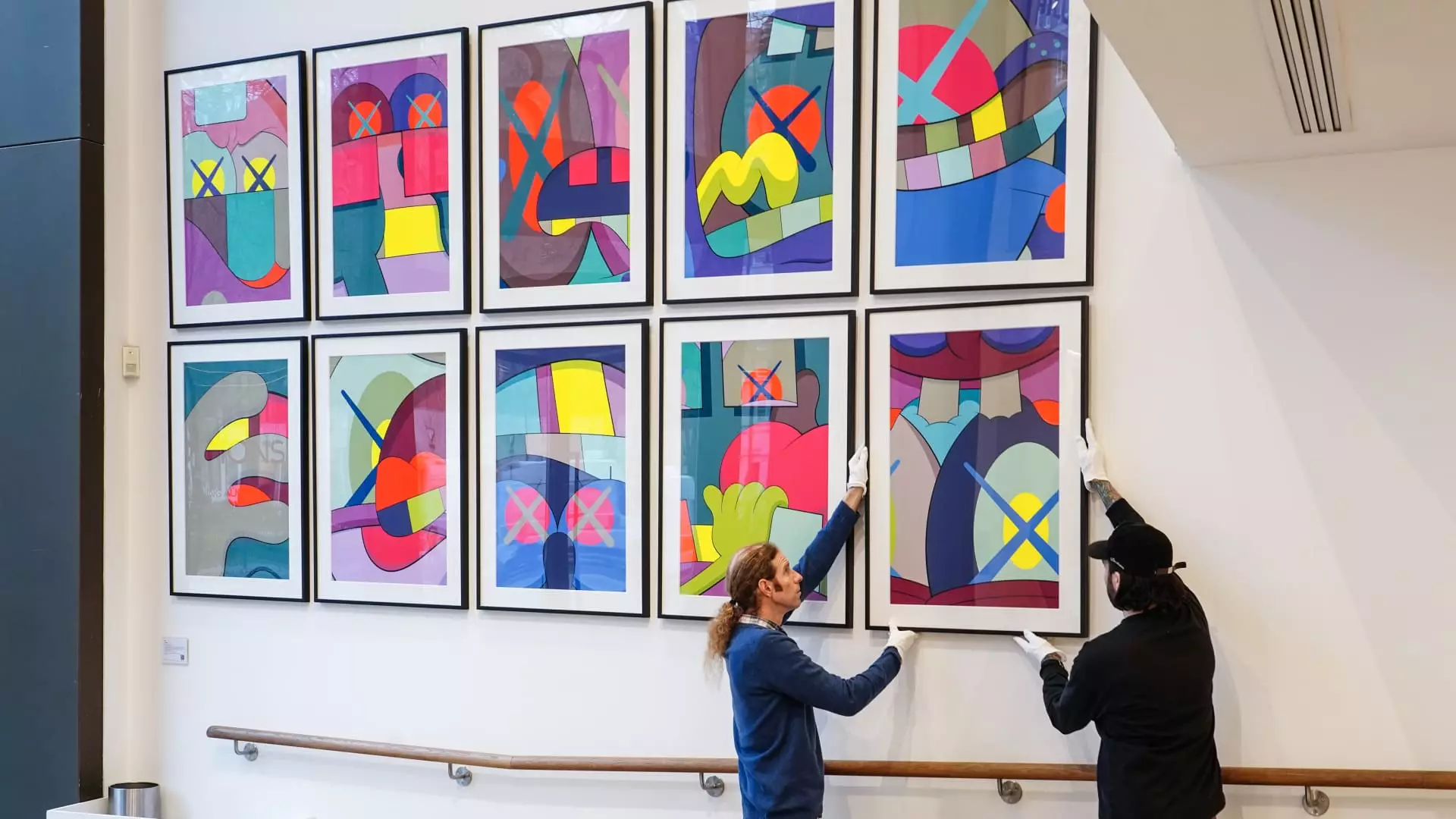In recent years, the narrative of unrelenting economic growth has painted a picture of unprecedented wealth accumulation among the world’s elite. Stock markets soar, real estate prices reach historic levels, and the ultra-rich are said to be thriving. Yet, beneath this glossy veneer lies a troubling paradox: despite this record-breaking prosperity, the art market—a traditionally reliable barometer of the financial elite’s sentiment—crashes to its lowest point in over a decade. This disconnect exposes the fragility of the myth that wealth and cultural investment are inexorably linked in a stable, symbiotic relationship.
What this suggests isn’t merely a temporary downturn but a fundamental shift in the social norms surrounding art collecting. One could argue that the dwindling sales reflect a recalibration within high-net-worth culture—a reassessment of what constitutes value and a challenge to the assumption that art is the enduring store of wealth it once was. The decline in Sotheby’s, Christie’s, and Phillips auction totals signals that the wealthy’s appetite for art is waning, or at the very least, transforming. This isn’t just a market correction; it’s an indictment of a society increasingly divorced from a shared cultural purpose, focusing instead on material accumulation that is less sustainable and more superficial.
Changing Tastes and Generational Shifts: A Cultural Revolution or a Crisis of Identity?
For decades, art served as a symbol of status and a means to display financial prowess. Historically, the art market thrived on the ambitions of baby boomers, who eagerly hunted down masterpieces to cement their social standing—building sprawling collections over decades and passing them down as trophies of their success. Now, this generation is aging, and their once insatiable demand appears to be cooling. Many are downsizing or liquidating large collections, often due to a lack of interest from their heirs, who see little personal connection to these once-iconic works.
Meanwhile, the new wave of ultra-wealthy—millennials and Gen Z—are navigating a digital era that reshapes their cultural values. Raised amid Instagram feeds, online shopping, and virtual experiences, they are less inclined to invest in physical art pieces steeped in tradition. Instead, their attention shifts toward digital assets like NFTs, luxury jewelry, and unique collectibles that can be easily shared or monetized in a virtual space. The sharp rise in jewelry sales—particularly among younger women, with a 68% increase—illustrates this evolving priority. It’s easier, more immediate, and culturally aligned with their digital-driven lives.
This generational transition raises a crucial question: is the art market genuinely experiencing a decline, or is it undergoing a radical transformation? The traditional art world appears to be caught unprepared, trying to adapt with online auctions and a broader focus on luxury items. However, this is likely a superficial fix that masks deeper cultural shifts—a sign that the once-robust link between wealth and high art is fraying. The market’s collapse at the high end, contrasted with buoyant sales of smaller works, indicates a reorganization of tastes rather than a simple downturn.
The False Promise of Wealth Concentration: A Fragile Foundation
The obsession with accumulating vast wealth has created a paradoxical scenario. On paper, the top 10% of Americans have added a staggering $37 trillion to their wealth since COVID-19, and stock indexes continue their upward trajectory. Yet, this wealth surge does little to support the art market’s stability. Instead, it highlights a troubling societal trend: linearly increasing personal fortunes no longer translate into sustained cultural investment.
William Goetzmann’s century-spanning analysis underscores a long-standing correlation between financial prosperity and art prices—until now. The apparent breakdown of this relationship hints at an underlying structural crisis. Is the art market losing relevance among the wealthiest, or is it simply the case that their priorities have shifted away from traditional collections to more disposable forms of luxury? The decline in high-value art sales and the simultaneous rise in smaller, more affordable collectibles suggest that the cultural capital once associated with owning grand masterpieces is diminishing.
This shift may be rooted in broader social concerns about sustainability, legacy, and social impact. Investing in art—once a marker of permanence—may no longer resonate with an increasingly socially conscious younger generation. Instead, they prefer assets that offer immediacy, flexibility, and lower barriers to entry. As the economy becomes more unequal and societal trust frays, the idea that art remains an inherently valuable, inflation-proof asset might be increasingly questionable. This reveals an uneasy truth: the very foundation of the old art market, built on the aspirations of the wealthy to showcase legacy, is cracking under the weight of changing values and economic realities.
The Industry’s Half-Hearted Response: Is Adaptation Enough?
In the face of these seismic shifts, auction houses are scrambling to recalibrate. Their focus on online sales and diversification into luxury items suggests an awareness of the changing landscape. However, these efforts seem more like superficial patches than genuine strategic reforms. While jewelry sales, especially among women, are booming, such growth doesn’t substitute for the cultural stature that high-end art once commanded.
The question remains whether these adaptations address the root of the crisis or merely prolong the inevitable. Online auctions, although more accessible, lack the visceral experience and cultural gravitas that physical galleries and grand auctions embody. The proliferation of smaller, lower-priced items can stimulate demand, but it may also dilute the exclusivity and allure that made high-value art a coveted symbol of wealth.
Furthermore, the industry’s focus on catering to the tastes of millennials and Gen Z might appeal in the short term, but it risks alienating a traditional clientele built over generations. The continued decline at the upper end of the market signals a potential redefinition of wealth itself—increasingly fragmented and less invested in the cultural symbology of past eras. Without a genuine shift in societal valuation, the art market’s decline points to a deeper societal engagement crisis—a loss of shared cultural narratives that once made art a unifying pursuit of affluence and taste.

